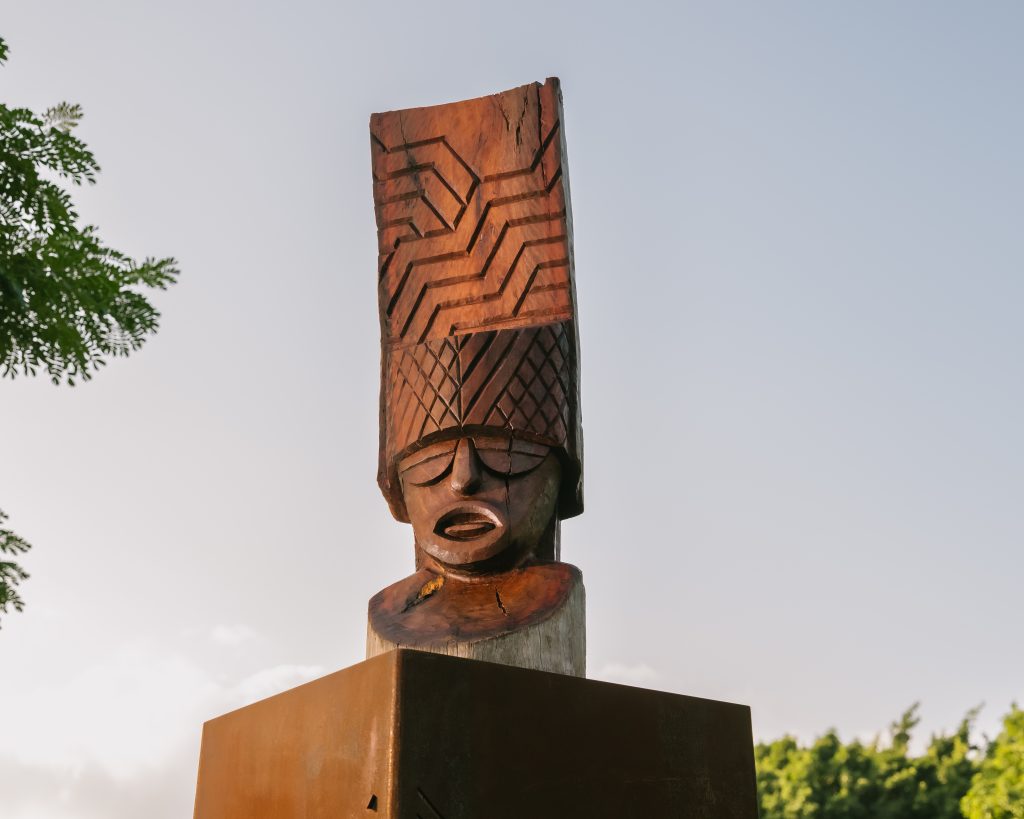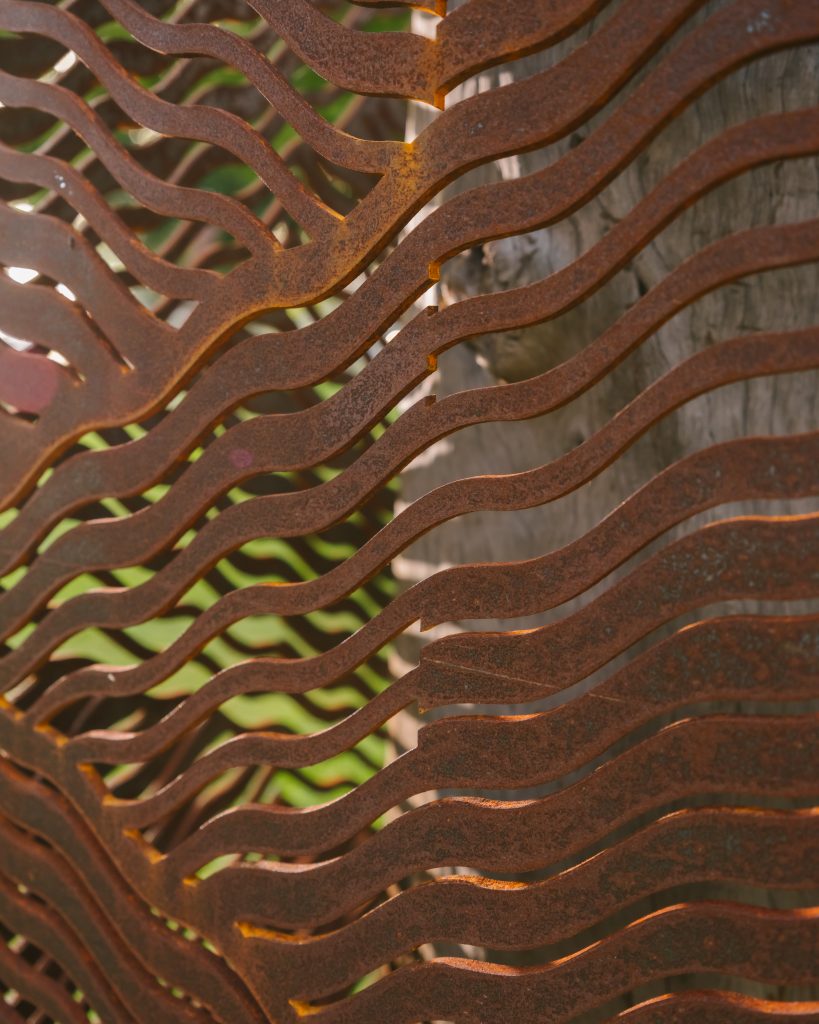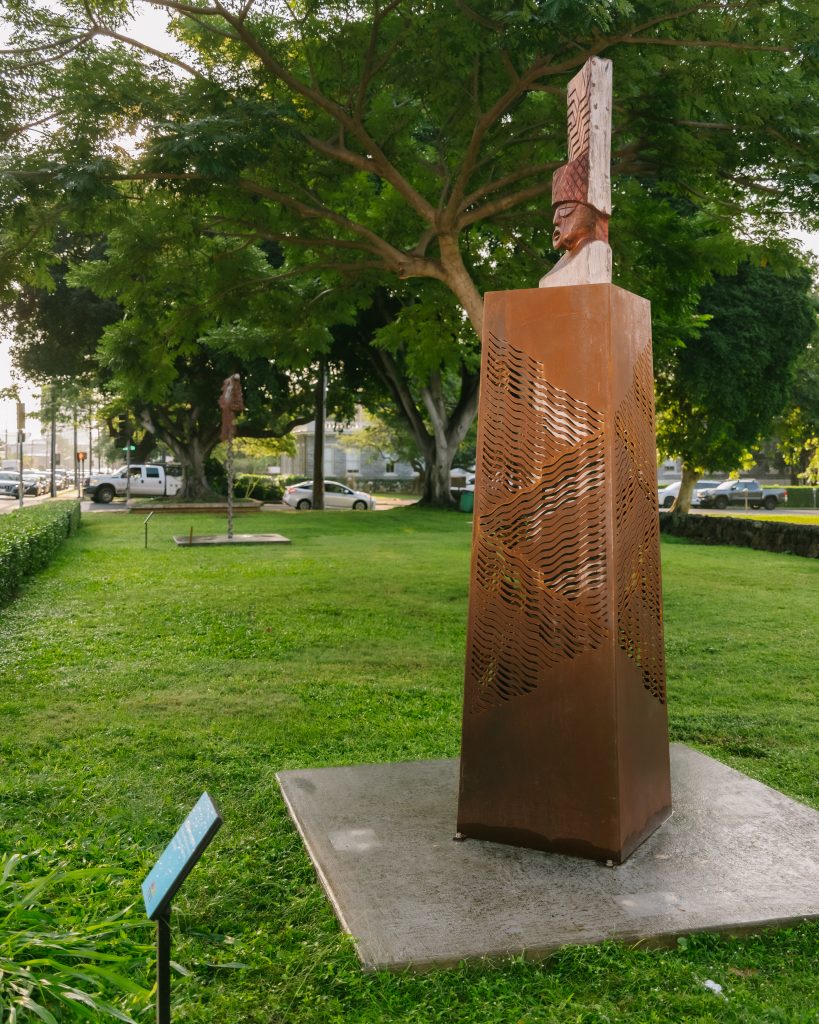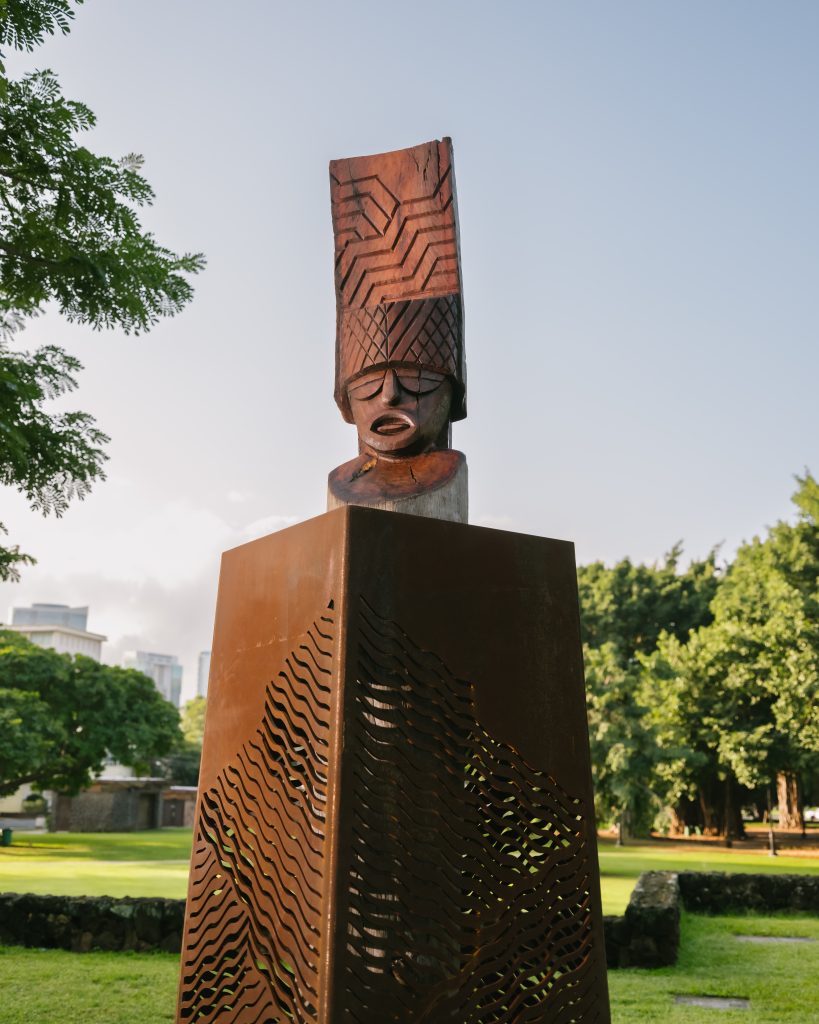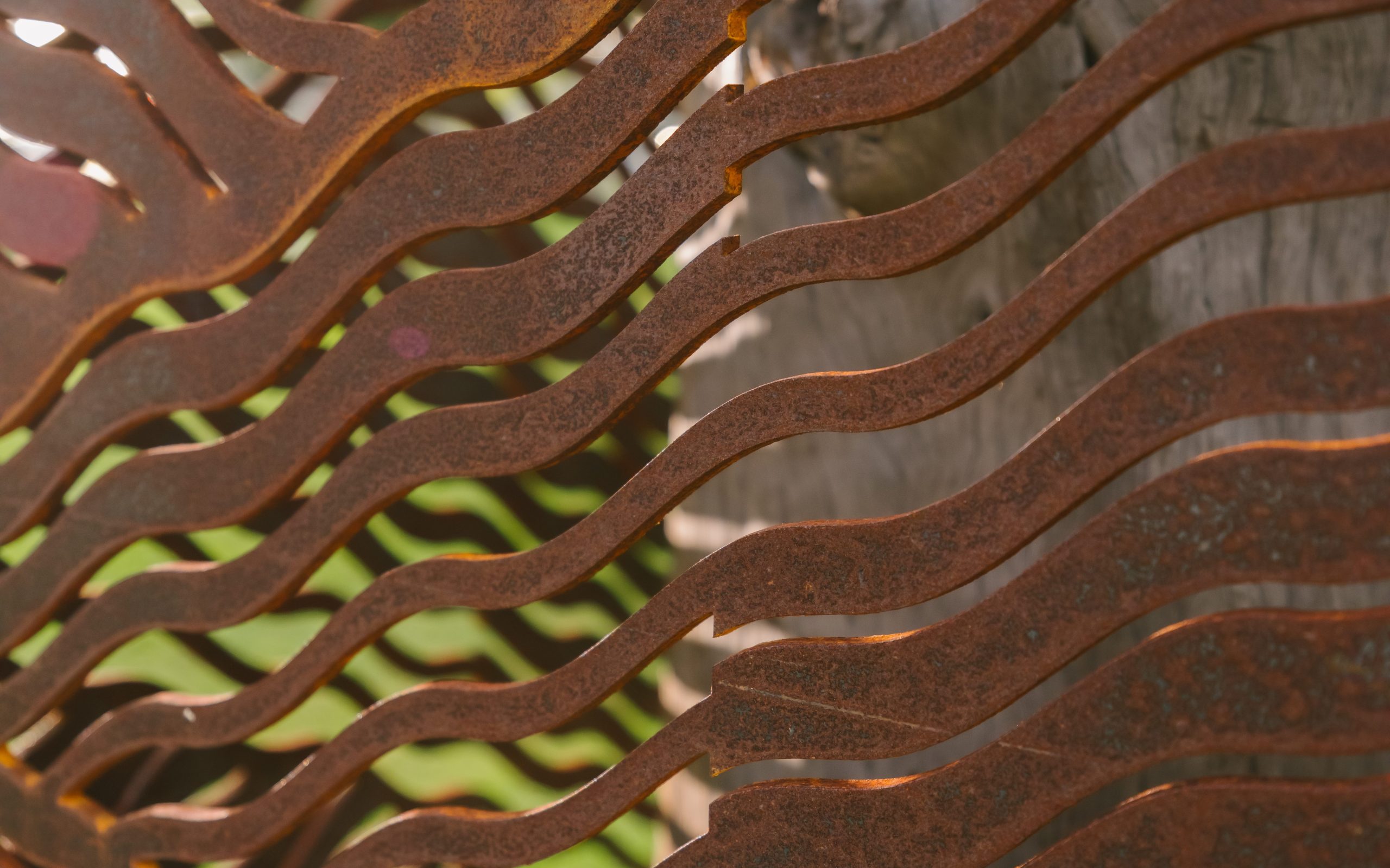
Cory Kamehanaokalā Holt Taum
E hoʻi i ke ea
2025
Hand-carved ʻŌhiʻa wood and waterjet cut weathered steel
King Kamehameha ʻEkolu and the national holiday Lā Hoʻihoʻi Ea are well known and highly celebrated across the Hawaiian Islands today. But many earlier Native Hawaiian leaders and their achievements remain to be acknowledged in the commemorative spaces of Hawaiʻi. Responding to this call, E hoʻi i ke ea (2025) is an homage to Kākuhihewa, a high chief of Oʻahu who maintained peace and prosperity during his rule, long before the founding of the Hawaiian Kingdom.
A contemporary interpretation of traditional practices, the sculpture unites different materials and techniques. Rising over ten feet tall and made of reclaimed ʻōhiʻa, a hardwood endemic to Hawaiʻi, the kiʻi, or image, was carved beneath the Koʻilipilipi rain in Kalihi Valley at Hoʻoulu ʻĀina under the direction of koa aloha ʻāina Casey Jackson. The base of the figure is raw, untouched by the artist, with marks from its past life at a Kailua-Kona hotel and its journey to Oʻahu remaining visible.
The kiʻi is protected by a weathered steel sheath. Each steel sheet has been waterjet-cut with an undulating stripe pattern that references a famous wind of the Honolulu area known as Kūkalahale. We cannot honor people without also honoring the elemental forces that connect people to places across time. The wind that blew in the time of Kākuhihewa is the same wind that fluttered the Hae Hawaiʻi (Hawaiian Flag) on July 31, 1843, and the same wind that blows today. May Kūkalahale carry Kānaka ʻŌiwi (Native Hawaiians) onward to the peace and prosperity we once knew.
About Cory Kamehanaokalā Holt Taum
Cory Kamehanaokalā Holt Taum is a Hawaiian artist who lives and works in Hawaiʻi, and the recipient of a Joan Mitchell Fellowship in 2020. He is an active cultural practitioner and mural artist sourcing his inspiration from the many stories and teachings of his ancestors and their relevance in today’s drastically changing Hawaiʻi. Taum is best known for his iconic, large-scale paintings on a wide range of surfaces from rusted metal to moss covered concrete to an invasive Albizia tree.
